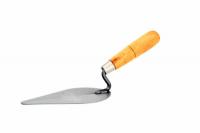Correctly depreciate lighting in a store
The self-employed and companies can usually deduct all costs that are directly related to the company from tax. The same applies accordingly to the depreciation of the lighting.

The definition of depreciation
The term depreciation is defined as follows:
- As soon as a company or a self-employed person buys current or fixed assets, these can be written off. A distinction is made between a low-value economic good and a long-lived economic good. The latter includes, for example, office furniture, computers or buildings. On the other hand, a low-value asset is always spoken of when it has a short lifespan and does not exceed a certain purchase price.
- Low-value assets are written off immediately, that is, the costs 100% for the purchase are used in the financial year. In detail, this means that the acquisition costs can be deducted 100% from the tax.
- Durable assets are depreciated over several years. Either straight-line or declining balance depreciation can be used here.
Deduct the shop lighting from the tax
The lighting for a shop can either be written off immediately or spread over several years. To find the correct form of depreciation, you should proceed as follows:
Depreciation of the refrigerator - this is how it works for the office refrigerator
A refrigerator may represent a low-value asset that ...
- If the lighting does not cost more than 410 euros, then this lighting can be written off immediately in one fell swoop. This means that the cost of lighting is 100% tax deductible in the same financial year. After the limit for the low-value assets is changed again and again, you should investigate in each individual case which limit is current at the moment.
- In the event that your lighting for your shop has cost more than 410 euros, you will need to find out about the depreciation for wear and tear table (Depreciation table) Inquire about how many years you will have to write off these costs. The acquisition costs are then spread over the corresponding number of years. Example: If a depreciation period of eight years applies, this would result in an annual percentage of 12.5%. This percentage is calculated from the acquisition costs and deducted each year (straight-line depreciation).
How helpful do you find this article?


